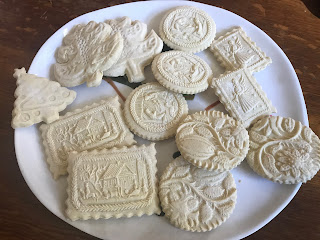I took an online survey about Covid recently developed by a major American university. A number of the questions referred to depression and anxiety, which people in the United States understand especially as it relates to not only the pandemic but also the current natural disasters that are wreaking havoc on people in this country. Other studies done before Covid in the last decade pre-pandemic have focused on exactly the same issues: depression, anxiety, and a myriad of stress-related illnesses such as high blood pressure, headaches, heart problems, diabetes, skin conditions, asthma and arthritis. What they discovered is that 43 per cent of all adults suffer adverse health effects from stress. Seventy-five to ninety per cent of all doctor visits are stress related ailments and complaints. Emotional disorders are more than fifty per cent due to chronic stress. Well, you get the picture. Houston (the world?), we have a problem.
Capitalism, the free enterprise system, and consumerism are not necessarily the culprits, but before Covid arrived, weren't we the ones who chose to get up at 4 a.m. to get the kids ready to go to school and rush off to beat the rush hour morning traffic to get to work, work all day, rush out the door to get on the freeway to get home at a decent hour, make dinner (order in?), and end the day knowing we were going to do it all again the next day? Most people felt they didn't have a choice unless they let their American Dream go by the wayside, which they weren't willing to do. Now that our lives have been turned upside down and we still don't know where we stand regarding a return to "normal," I believe it's time to rethink the little things we do in life that will result in big changes for the better. I suggest the answer lies in a movement that the happy people of Denmark know well and practice every day, the Hygge life (pronounced hoo'-gah). Let me elaborate.
The etymology of the word hygge is Old Norse and was first used between 1560 and 1570. A number of derivations have contributed to hygge: hugr, meaning mood; hugga, to soothe or console, and the Old English hogian, to care for. It is not surprising that the current English word hug is the close relative we know so well. Today the word is used to describe the act of giving courage, comfort, and joy. It is no surprise that Scandinavian countries like Denmark and Norway find cultural identity in the concept. What could be more comforting on a cold snowy day than wrapping oneself in woolen socks and a warm blanket, sipping a cup of cocoa in front of a roaring fire?
For those of us who live in warm climates where the thermometer doesn't drop until late December, what alternative do we have for practicing the art of hygge? Read on.
If I could describe hygge in one sentence it must be this: It is practicing kindness to yourself and others by celebrating the little joys of life and staying present in every moment.
The opportunities to do this are endless no matter the climate, but unfortunately we have either forgotten how to enlist them or considered them a waste of time in our fast-paced, often futile efforts to achieve more and more and more. While hygge doesn't deny monetary wealth, the culture of hygge is about the life experience itself that may actually cost very little, and often nothing but your time. Relaxation, slowing down to "stop and smell the roses" is essential to self-care, and in order to perform that task it is essential to drop the feeling that you are obligated to live up to others' ideals. Once you have mastered that, you will immediately begin to slow down, and actually find more time for self-love and kindness for others. Below are a few suggestions for you to try as you incorporate hygge into your life.
1. Take inventory of your home. What do you own that creates warmth? Candles, pillows, soft woolen blankets, mugs for a warm drink, a cozy fireplace? Put them to use, especially with the people you love.
2. Go for a long leisurely walk, preferably where you can see trees. People who spend time in green spaces are healthier, and your dog will love you for it.
3. Learn to cook comfort food and share it with others. No digital devices allowed. Plan for meals served around the table.
4. Make gifts for people. We often think about buying gifts, but handmade ones are so much nicer. You are giving the ones you love a piece of your time and your talent.
5. Put fairy lights in your garden and have a glass of wine in the semi-darkness as you reminisce about the good times with a friend.
6. Before daylight, put the kettle on and have a cup of tea and a muffin in candlelight quietness before everyone awakens.
7. Keep a journal, and even better, a five-year journal.
8. Make Christmas cookies with your family or friends.
9. Enjoy loose, comfortable clothing as you relax.
10. Write letters by hand and send them to family and friends who live far away.
11. Look around your house for things you can re-purpose, especially those that can benefit from your creative artwork.
12. Take time to curl up and read a good book.
13. Plant something and watch it grow. Flowers are bright splashes of color in your garden. Even better, try planting a herb garden in pots. Choose herbs that you would usually use dried. Now you can have fresh ones right outside your door.
14. Bake cookies and surprise your neighbor. Maybe she'll ask you in for a cup of tea.
15. Plan a picnic with bits of food you have prepared yourself and don't rush. Engage in conversation and enrich relationships that are genuine by spending time outdoors together.
16. Make Christmas decorations for the tree with your family.
17. Emphasize little spaces in your home or office--a shelf, a table, with seasonal decorations, especially natural ones that you have collected. Fill a jar with pebbles and dried flowers, find an interesting piece of wood, a bird's nest, shells, wild flowers.
18. Learn how to sew, crochet, knit, or do needlework. Make a warm gift for yourself or a friend.
19. Put seed out for birds and squirrels (opossums?) near a window and watch their regular visits.
20. Use cloth napkins as often as you can. You can find inexpensive ones at estate sales, garage sales, or thrift stores.
Living the hygge life is not a prescription for happiness, but it can lead to it. This cultural movement is about slowing down and living in the moment with people you care about. It requires generosity and the desire to foster unity and positive relationships, and the time devoted to this lofty goal will engender a sorely needed ripple effect. In an age where appearances seem more important than reality, practicing hygge can get us back on the road to our peaceful authentic selves.
My beautiful family










No comments:
Post a Comment